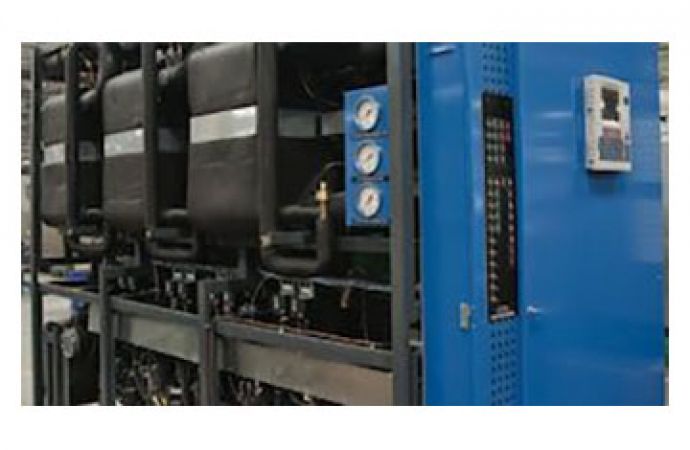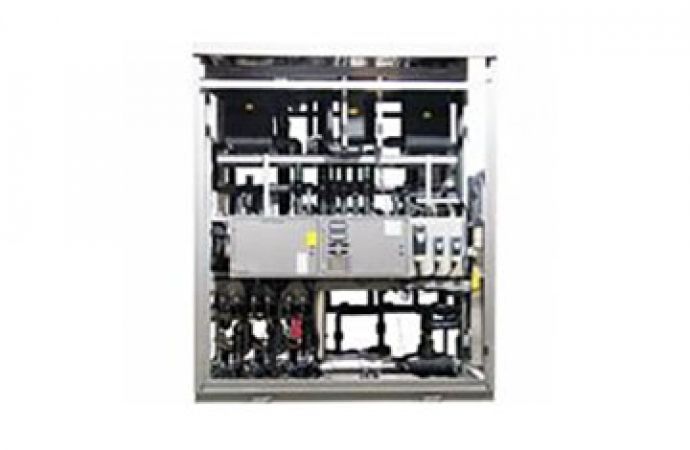Target, Whole Foods, Sobeys and Ahold USA will be among those offering insights on sustainable refrigeration and store energy savings amid a period of rapid transition in North America.

A leader when it comes to environmental regulatory reform in North America, California is riding the crest of the Obama Administration’s and EPA’s renewed emission reduction targets and sustainable technology procurement plans laid out in 2015.
Plenty of progress has been made already in California this year including a bold strategy proposed by the California Air Resources Board (CARB) to reduce HFCs by 80% by 2030, a target well ahead of national standards.
This will fast track the development of a refrigeration industry that has seen more developments in the past few years than in the past several decades.
Held at the Sheraton Hotel in San Diego Calif. from September 27-30 2015, the FMI Energy & Store Development Conference aims to build on the progress made at state level by promoting energy efficiency and conservation.
The event invites a variety of stakeholders in the food retail industry from store designers, refrigeration engineers and service technicians to manufacturers to share their views, cost-saving solutions and customer-friendly environments to arm businesses with the best sustainable practices.
Comprehensive guide to the 2015 programme
Following the pre-conference committee meeting and opening reception on the Sunday, much of the programme is sandwiched into concurrent breakouts on Monday and Tuesday 27-28 September.
The 2015 edition is divided into three key pillars: refrigeration, energy and store development and will include presentations from a number of retail speakers that have been at the forefront of natural refrigerant adoption, including Paul Anderson of Target, Aaron Daly of Whole Foods Market, Ian Crookston of Sobeys and Ken Welter of Baltic Trail Engineering (Ahold USA’s contractor).
Anderson, Target’s senior group manager, engineering, will team up in a general session with Keilly Witman, the former manager of the EPA’s GreenChill programme who now runs KW Refrigerant Management Strategy.
Their topic: “A Provocative Look at the Future of Refrigeration and Store Design,” attempts to challenge ‘preconceived notions’ about refrigeration technology, store maintenance, store design and merchandising, as well as environmental best practices.
In another general session, Aaron Daly, global energy coordinator for Whole Foods Market, will share best practices for communicating sustainability achievements to customers and other parties without ‘green-washing’. He will explain how Whole Foods partners with the Department of Energy and various EPA programmes to lend credibility to sustainability claims.
Breakout sessions on refrigeration will cover basic refrigeration principles, maintenance, what to expect from an EPA inspector, and a refrigeration roundtable for retailers and wholesalers.
Refrigeration 101 is an introductory session to equip attendees with the basic understanding of refrigeration systems, related components and their functions within the system. James Kirk, HVAC&R Manager of Facility Source, will also investigate the growing demand for direct expansion and secondary refrigeration systems (including CO2/NH3 cascade) in the commercial refrigeration market.
Meanwhile, BaselineES president Tom Mathews’ Refrigeration 401 explains what actually goes on inside refrigeration systems and what this means for lowering minimum condensing pressures (condensing point): “the single most effective and simplest refrigeration energy efficiency strategy available.”
The maintenance session, presented by Welter outline the strategies inherent in a comprehensive supermarket refrigeration and HVAC maintenance programme, how to identify the right metrics and align the goals of the maintenance, engineering and energy divisions.
Energy reductions, EPA presentations
The energy and store development breakouts will include case studies on recommendations to achieve 50% energy reduction in grocery stores, HVAC best practice and design trends, retro-commissioning, and LED retrofit solutions.
In a session on reducing utility consumption, Ian Crookston, Sobeys’ manager, energy management, will review some common and easily replicated utility conservation initiatives used in one of Sobeys’ 40,000-square-foot food retail stores, including adiabatic cooling and variable flow compressors, which will be reviewed from the perspective of reduced utility consumption, government incentives and system efficiency index.
As of early 2015 Sobeys boasted 72 CO2 transcritical systems, making it a leader in North America.
Mick Schwedler, steering committee chair of the Advanced Energy Design Guides (AEDG), will also talk about obtaining energy reductions in grocery stores. In March of 2015, a 50% Grocery AEDG was published, from it, Schwedler will provide specific examples of recommendations, case studies, technologies, systems, and controls to reduce grocery store energy use by 50% (compared to ASHRAE 90.1-2004).
Rebecca von dem Hagen, a biologist with the EPA’s Stratospheric Protection Division will provide an update of ongoing EPA regulatory actions relevant to the food retail industry. These include the Significant New Alternatives Policy (SNAP) programme, the Obama Administration’s Climate Action Plan, anticipated regulatory updates to section 608 of the Clean Air Act, and the current status of the HCFC regulatory allocation programme.
The EPA’s GreenChill programme, led by Tom Land, will present its annual achievement awards at a 7am breakfast ceremony on 29 September. The awards include, among others, best emissions rate, most improved emissions rate, store certification excellence and distinguished partner.
The last day of the conference will feature a tour of San Diego’s Energy Innovation Center and local supermarkets. A grocery store in the 1950s, the Energy Innovation Center is now home to a working demonstration kitchen and a number of energy-efficient technologies. The Center reuses or recycles about 85% of the building’s materials; has a heat-reflecting roof to reduce HVAC&R energy consumption, solar panels, ultra low-flow water fixtures, intuitive sensors to switch off lighting and HVAC&R applications; and is one of only ten buildings in the world to achieve Double LEED Platinum Certification.
Sponsors
R744.com, hydrocarbons21.com and ammonia21.com partners Hillphoenix, Heatcraft Worldwide Refrigeration, Bitzer, Carel, Danfoss, Emerson, Parker and Carnot are all sponsoring the event.
For more information, how to register and the full programme guide visit the FMI Energy & Store Development Conference website: http://www.fmi.org/forms/meeting/Microsite/ESD2015
MORE INFORMATION
Related stories








